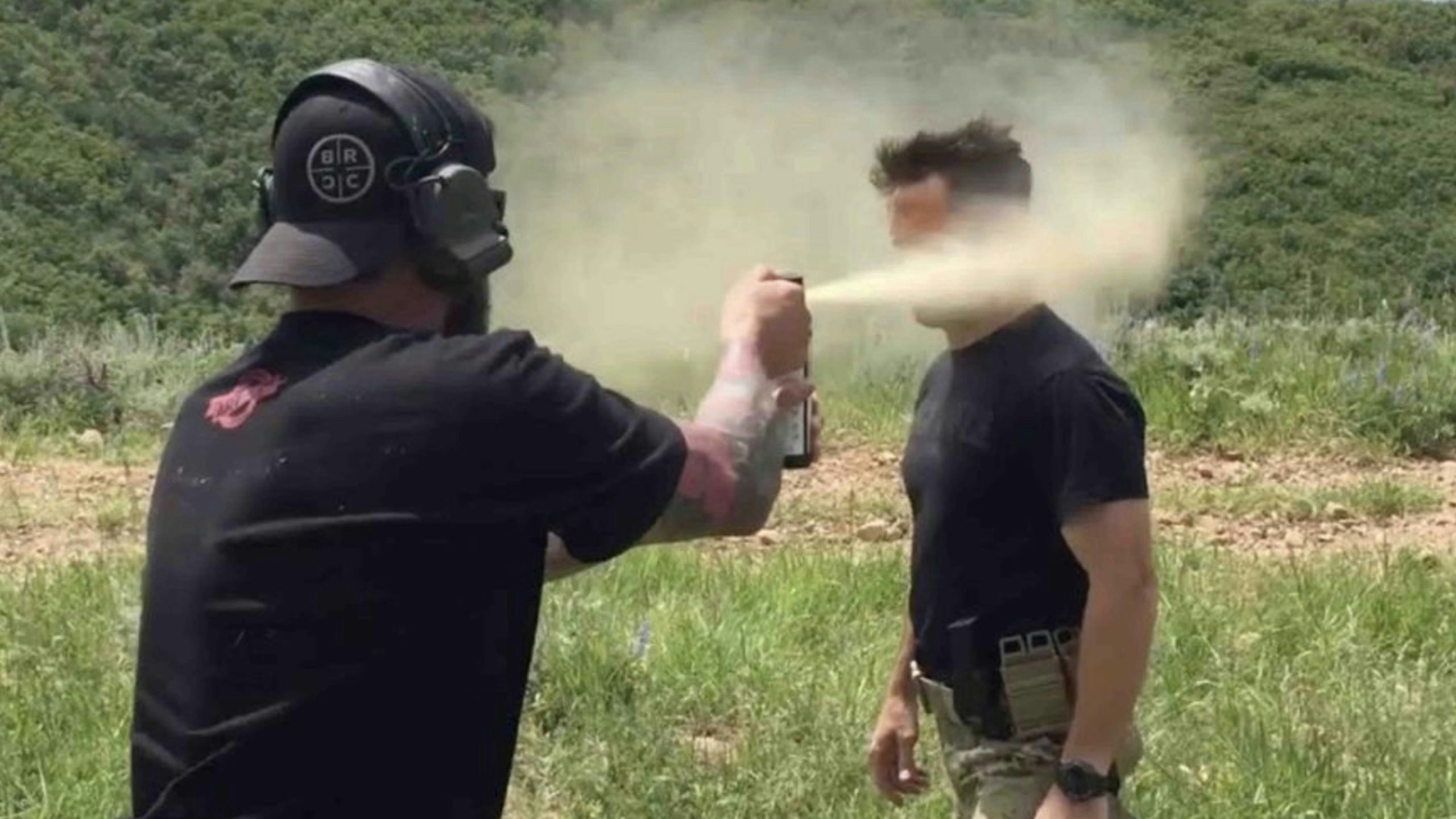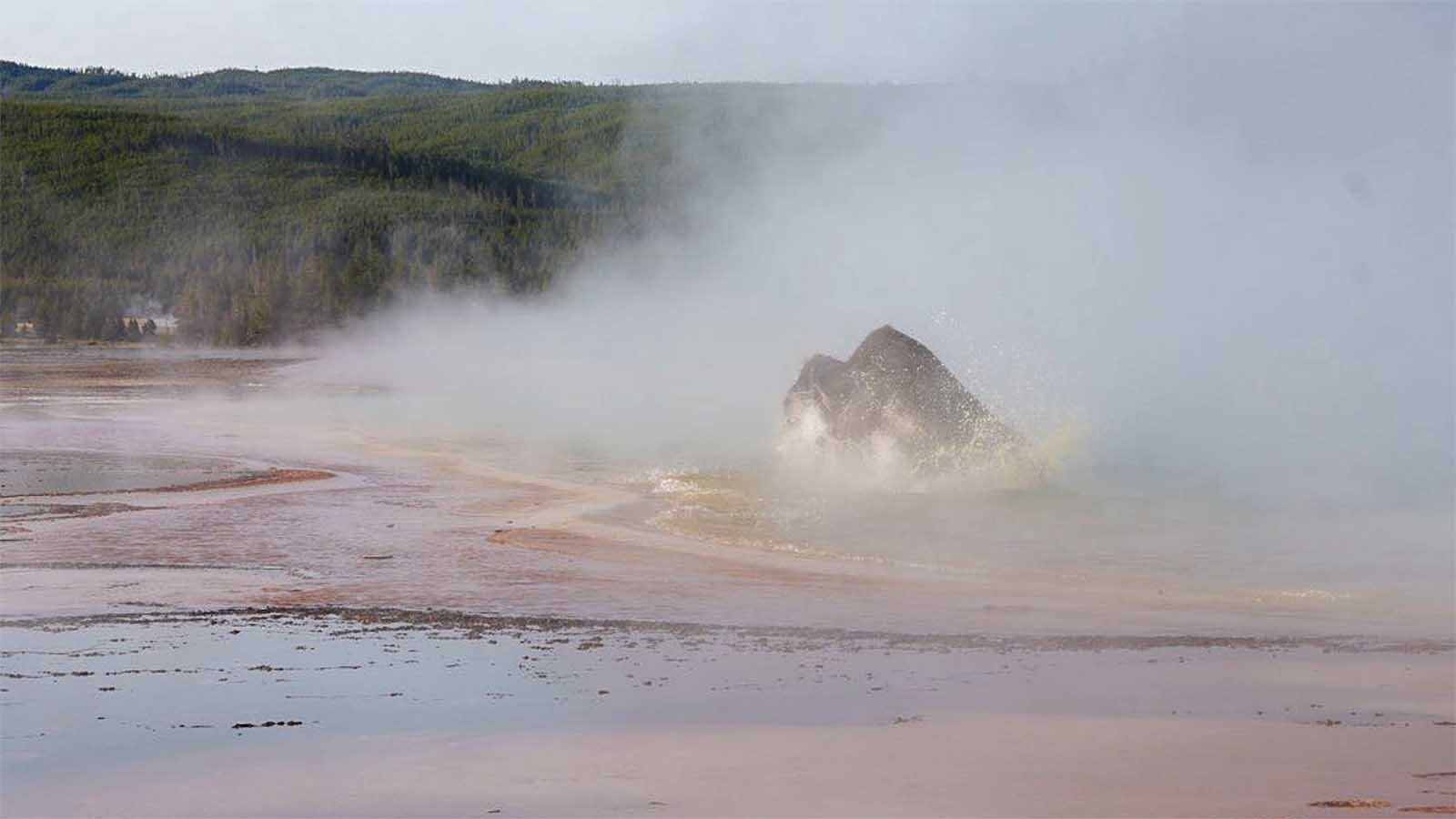It’s a question that has swirled for decades among outdoors enthusiasts – in grizzly country, are you better off with bear spray or a firearm?
The answer could be “it depends.”
Some favor the authority of a firearm, while others like bear spray’s relative ease of use. And many choose to carry both.
Keep Alert
The best defense in grizzly country is keen situational awareness and practiced skill with whatever method of defense people choose, bear expert Dan Thompson told Cowboy State Daily. He’s the large carnivore specialist with the Wyoming Game and Fish Department.
“This question (bear spray or firearms) is something brought to Game and Fish fairly regularly,” he said. “It’s not so much of an ‘either/or’ statement, but rather people having multiple options and tools to deal with an aggressive bear encounter and the wherewithal to properly use them.
“The best tool you have is your own situational awareness and both mental and physical preparedness when in grizzly bear occupied areas.”
Spray Generally More Favored
Many experts seem to favor bear spray. One drawback of firearms they cite is the inability of many shooters to make accurate, quick-kill shots under the extreme stress of a bear attack.
A study by the U.S. Fish and Wildlife Service seems to bear out the idea that spray is the best option for most people in most circumstances.
“The question is not one of marksmanship or clear thinking in the face of a growling bear, for even a skilled marksman with steady nerves may have a slim chance of deterring a bear attack with a gun,” the study says.
Avid backpacker Taylor Washburn of Sheridan, who works for the Wyoming Wilderness Association, told Cowboy State Daily that he favors bear spray. That’s because it’s easy to pack and simple to use.
It’s also allowed in places where carrying firearms might be prohibited or severely restricted, such as in national parks, Washburn said. He’s carried bear spray while hiking and camping in the backcountry a several states.
He’s still fairly new to Wyoming and hasn’t ventured into the Cowboy State’s grizzly country yet. However, he still carries bear spray while hiking in the Bighorn Mountains in case of run-ins with mountain lions, black bears or even ungulates.
“Deer, elk and moose can get rowdy sometimes too,” he said.
Give People A Choice
Like Wyoming Game and Fish, the Montana Fish Wildlife and Parks Department (FWP) lets people decide for themselves, agency spokesperson Greg Lemon told Cowboy State Daily.
Even so, FWP tilts in favor of bear spray, he said.
“The reason we promote the use of bear spray is it’s been shown time and again to effectively stop a bear attack,” he said. “It doesn’t take the accuracy the way a firearm does. We have had staff and bear managers, people who work with bears all the time, who have deployed it (bear spray). With all of our people that’s happened to, the spray has stopped the charge.”
In the end, Lemon said no matter what method others recommend, people also should factor in what they’re most comfortable using.
“That being said, people have to be comfortable in the field with whatever makes them comfortable,” he said. “And if a sidearm makes them feel comfortable, we don’t discourage them from carrying one.”
Sometimes Spray Doesn’t Work
In two recent high-profile Wyoming grizzly attacks, the victims said they either didn’t have time to use bear spray or questioned whether it would have worked.
Northwest College wrestlers Kendell Cummings and Brady Lowry said they were carrying bear spray when they were attacked by a grizzly outside of Cody on Oct. 15.
They said the bear took them by surprise and rushed them so quickly, they didn’t have time to get to their spray. The bear went after Lowry first, and then Cummings was attacked when he tried to pull the bear off of Lowry.
Lee Francis was attacked by a grizzly Oct. 21 while deer hunting with his son in the Gros Ventre mountains.
He drove the bear off with multiple shots from his 10 mm Glock handgun. He shot himself in the foot in he process, he said, because he was on his back and trying to kick the bear away as he was firing at it.
Despite the gunshot wound, Francis told Cowboy State Daily that he’s glad he had his pistol and will continue to carry it in the back country. He said bear spray wouldn’t have worked during his bear attack. That’s because the wind was blowing and the bear was near enough and charged quickly enough, it might have just plowed right through the spray.
Take Both, And Enough Gun
Francis said his Glock was loaded with hard cast bullets because those are the right type to carry for bear defense. Soft-nose or hollow-point ammunition is meant to defend against other people, and won’t effectively penetrate a grizzly’s thick hide, fat layers, muscle and bones, he said.
Noted Wyoming outdoorsman Paul Ulrich agreed that hard-cast bullets are best. And making sure you’re carrying a firearm that’s powerful enough is important too, he told Cowboy State Daily
His preferred grizzly country firearm is a Taurus Judge revolver, chambered in .45 Colt.
Long arms, such as shotguns or big-bore rifles, are even better, Ulrich said. But they can be unwieldy, particularly if a person is already carrying a bow or hunting rifle.
Ulrich said he likes to carry both bear spray and his revolver when he ventures into grizzly country, adding that he won’t venture in alone.
With multiple people, the best shooter can be assigned to carry a good bear-stopping gun, such as .45-70 rifle or a shotgun loaded with copper-plated buckshot and rifled slugs, he said.
Ulrich ended his thoughts on a humorous note.
“My preference for grizzly deterrent is to bring a friend from Utah or Colorado,” he said.





